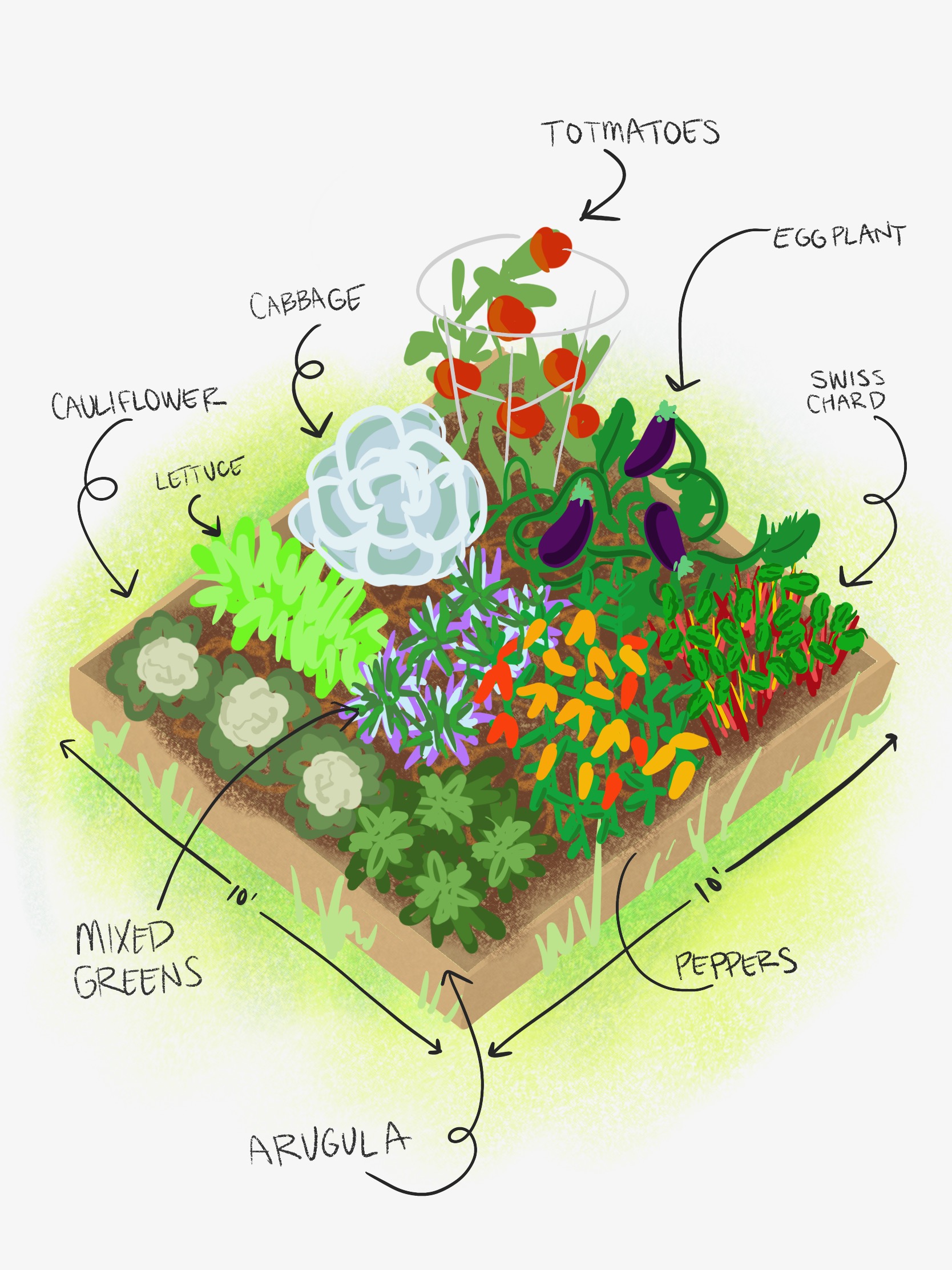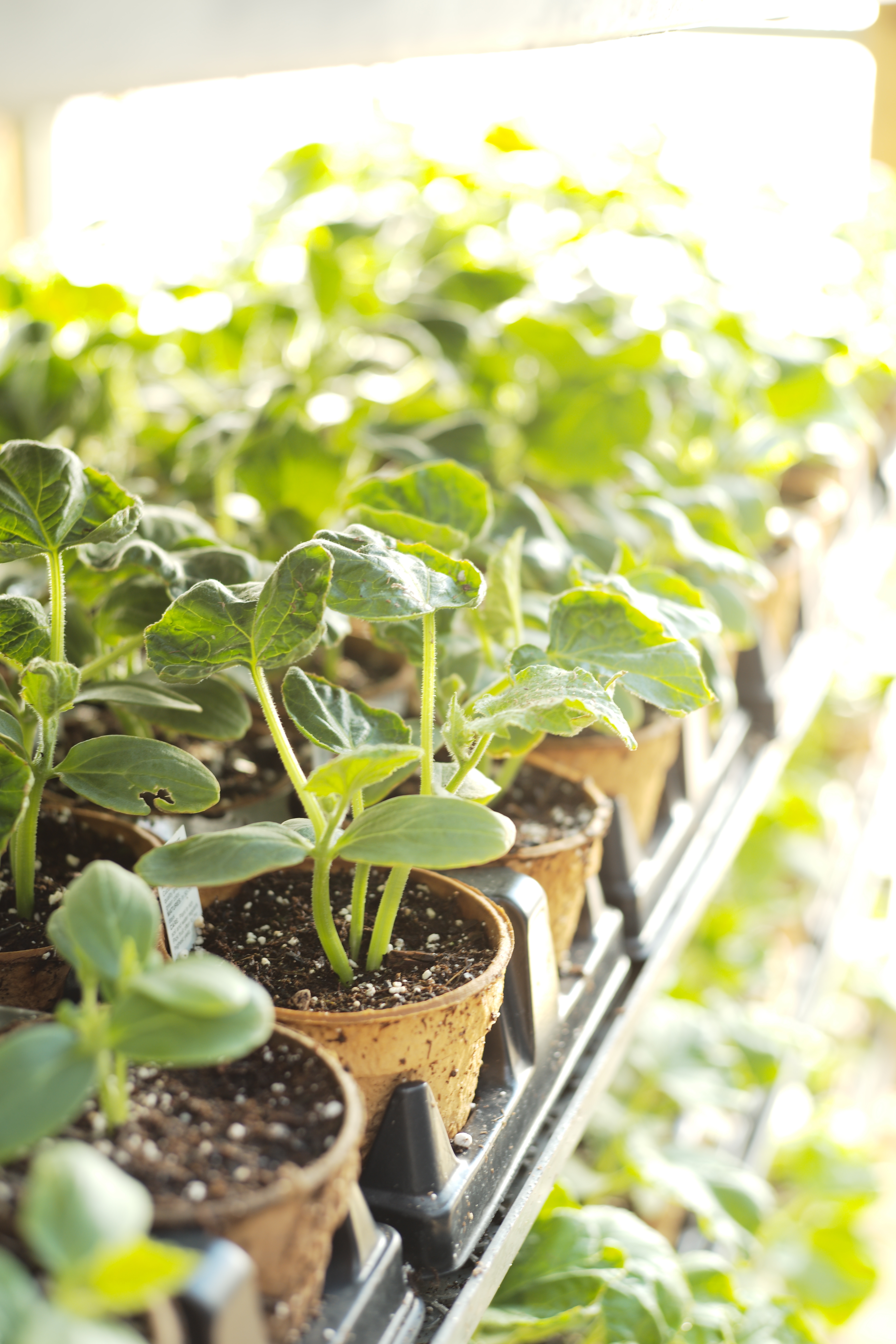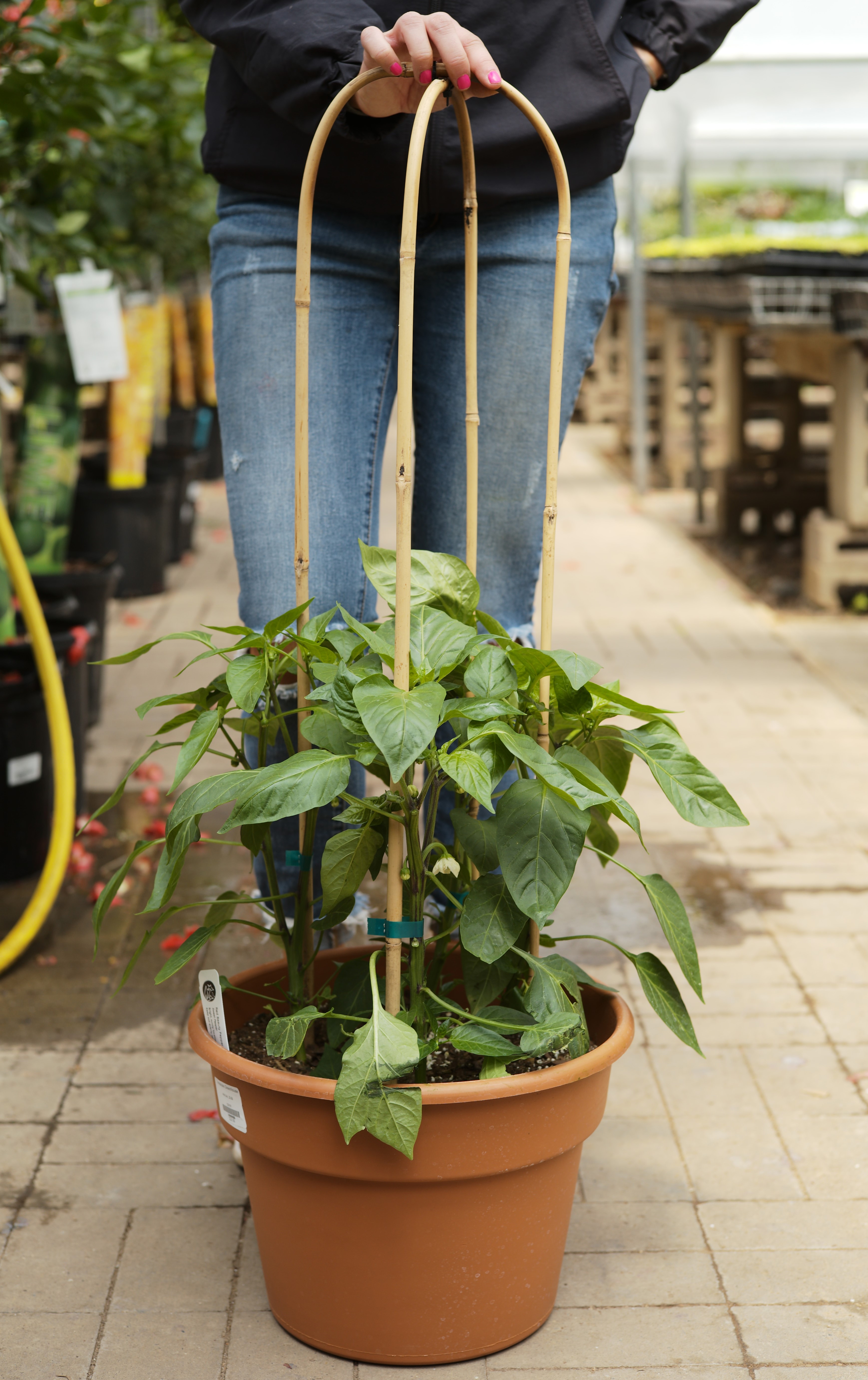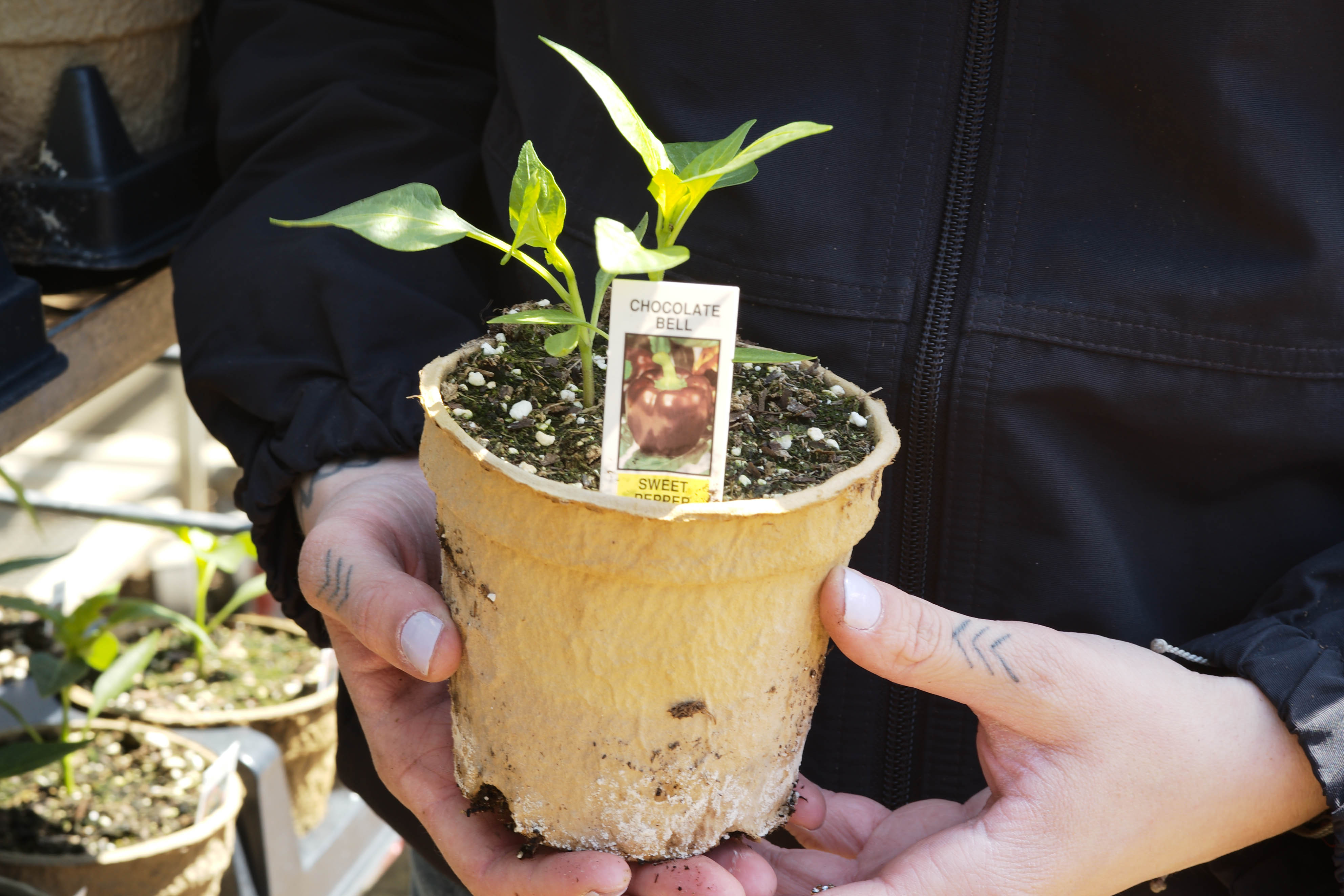Vegging Out! Planning and Planting a Vegetable Garden
Posted by Jessie Jacobson, Val Thies, Betsy Dvorak on Apr 23rd 2021
We have compiled the most comprehensive resource to ensure your vegetable gardening success this season! Read on.

Choose a Sunny Space
Most fruits and veggies require full sun. 8 hours or more is best. If you only have 3-4 hours, it is possible to grow lettuce, kale, spinach, and some herbs. With 5-6 hours of sun try radish, carrots, parsnip, swiss chard, and most herbs.
Garden Set-Up
So many possibilities! Containers, raised beds, and in the ground are all possibilities. Mix and match to your heart’s content. Get creative and plant herbs and lettuce in hanging baskets and window boxes, too.

Rotation, Rotation.
Try not to plant vegetables from the same plant family in the same location year after year. Rotating crops helps break disease cycles, keeps soil viable, and promotes diversity in the garden. This is especially important for plants in the Solanaceae (tomatoes, peppers, eggplant) and the Curcubitaceae (cucumbers, zucchini, and squash) families. Less disease and pest pressure means fewer chemical interventions needed. Even product approved for organic gardening can be harmful to beneficial insects and pollinators.
Container Gardens
Over the last several years, the horticulture industry has dedicated efforts towards breeding vegetable crops to grow in containers and small spaces. These varieties, while quite productive, are more compact with smaller fruits.
Most peppers, patio varieties or not, can be grown in containers. Growing peppers in containers is quite beneficial because the soil in containers heats up more quickly than soil in the ground. Peppers, especially hot peppers such as the ghost pepper of habaneros need a long, hot growing season. Grow peppers in at least a 12” container. Our most popular pepper varieties for containers include Jalapeno, Lunch Box Mix, Lunch Box Red, Candy Cane and the hot ones such as Ghost, Carolina Reaper, and Habanero.
Grow determinate tomatoes in a 12” – 14” pot and know you are going to be watering like crazy! Definition time. Determinate tomatoes are best suited for containers because they grow to a determined, mature size and their fruit ripens over a fixed period of time – usually 2-3 weeks. Indeterminate tomatoes are better suited for raised beds or in ground gardens because they continue to grow, and become very large throughout the season, setting fruit long into August and September. Best varieties for containers include: Bush Allstar, Celebrity, and Patio Choice Red.
Grow patio cucumbers in a 14”pots and provide a trellis or bamboo support for them to climb on. We recommend Patio Snacker.
Patio eggplants will do just fine in a 12” pot and may need support depending on how large the plants grow and how heavy the fruit is as it develops. We recommend Patio Baby.
Mix and match herbs in containers, about 4, 4” herbs will fit in a 12” pot. Grow basil on its own because it can get huge, and as the most delicious herb, you definitely want to maximize production.
Lettuce, spinach and other leafy greens do wonderfully in containers and can be re-seeded to extend yield long into the fall.
We recommend our house blend, Tonka Terra for growing veggies and herbs in containers. Suitable for organic gardening and locally produced and packed, Tonka Terra is sold in a 1 cu. ft. bags for $14.99. 1 bag of Tonka Terra will fill about 2, 12” pots.

Raised Beds
The advantage of raised beds is that you have all the control. You choose the size, the site, and the soil. You can build your own or buy a kit. Gardner’s Supply has a nice assortment to choose from. If you are building your own, make sure to provide at least 12” of soil depth for all veggie plants and make certain that you are using untreated wood as treated wood can leach toxins into the soil. Untreated pine or cedar are great options for raised garden beds. Again, we recommend using Tonka Terra in a raised bed situation. If you are using topsoil, make sure to amend with organic matter and peat moss, or for a peat free option, use Coir.
In-Ground
Traditionally, vegetable gardens are planted row by row in perfect 4-sided grides. And that is great if you have the space and the sun. However, you can also plant herbs and veggies in-ground to complement any existing garden save that the soil is suitable, and the sun is shining.
Start with the Soil
Healthy soil yields healthy plants. Amend existing soil on a yearly basis. A general rule of thumb when amending soil is that a 1 cu. ft. bag covers 10 square feet of garden. Two products that we love include Composted Manure and Purple Cow Premium Compost (actually a vegetable-based compost). Both are suitable for organic gardening. Both contain yummy organic matter and micro-nutrients. When in doubt, soil testing is an option. The University of Minnesota Soil Testing Laboratory has an easy-to-use service for a small fee.
Have a Plan to Keep the Critters Away
Yes, we like veggies and so do the critters of the neighborhood. However, there are options to make sure your yields don’t become their lunch truck.
Physical Barriers
If you use a fence, you may not need repellents. But do know that deer can clear a pretty tall fence and are habit eaters, so we do need to train them away. An 8-foot fences should be adequate. In lieu of a large fence, deer must believe they do not want to enter an area. Electric fences work because, once tickled by the lightning, deer remember the sensation and believe they cannot cross the barrier or get out once they get in (what a difficult situation to be in). Another option is tightly strung fishing line between rebar stakes around the area you would like them to avoid. Deer are skittish, and because they feed mostly early in the morning or at dusk it will be harder for them to see your “invisible barrier” causing them to feel uneasy about something they can’t see and won’t like that eerie touchy feeling. They will simply leave and find somewhere else to forage.
For rabbits, little fences work well. They can hop, but not very high.
Rabbits
If rabbits have visited the garden, you will know it. With their very sharp teeth they leave a clean, angled cut on nice juicy stems. Rabbits love tender, new growth, so protecting new shoots until they are at a less appetizing stage can be helpful.
Deer
Deer teeth tear plants rather than cut them, so the damaged plant will have rough rather than clean-cut edges.
Chipmunks & Squirrels
Chipmunks dig in gardens and containers to bury their food for winter. Their sole purpose, besides eating, seems to be storing food for eating later.
Repellants
In lieu of a high security fencing operation, one of the best ways to deter critters is to train them away. We recommend applying granular repellents such as Liquid Fence or Repels All around the perimeter of your veggie garden as early as possible. This won’t affect the taste or appearance or your produce, although it is a little stinky! Rotate repellants to keep the chompers on their toes. We like Repels All by Bonide and Liquid Fence Deer and Rabbit Repellant. For chipmunks and squirrels, they have their own special brew. All made from stinky stuff.
Invite Good Bugs and Pollinators to the Party
Make sure to plant and array of annuals in your veggie garden beds or planters. A few to include are zinnias, verbena b., marigolds, and pentas. Pollinators are important for ample produce production. Diversity in the garden also increases beneficial insect populations. After all, lacewings and soldier beetles deserve some credit too! A diverse garden is a happy garden!
Time to Plant!

Directly ow these items into the garden late April to early May:
Carrot seeds
- root crops grow best in loose soils.
- seeds can take three weeks to germinate.
- thin seedlings to 4” spacing when top foliage is 4” tall.
- harvest throughout the season at useable size.
- carrots become sweeter after they have endured a frost in the fall.
Radish seeds
- root crops grow best in loose soils.
- seeds germinate more quickly than carrots.
- thin seedlings to 2” spacing when top foliage is 4” tall.
- drought stress can cause poor root development and woody flavor.
- harvest 5 weeks after planting.
Beet seeds
- root crops grow best in loose soils.
- seeds germinate more quickly than carrots.
- thin seedlings to 4” spacing when top foliage is 4” tall.
- harvest throughout the season at useable size.
- beets become sweeter after they have endured a frost in the fall.
- beet greens can also be harvested for fresh eating as baby greens or when mature for use in cooking.
Snap Peas, Peas, and Beans – both bush and pole
- peas with edible pods include sugar snap peas and snow peas.
- young pea shoots are also edible and sweet.
- peas and pole beans require a trellis to grow on.
- peas love cool weather and will produce until the weather hits 85 degrees.
- snap beans are ready for harvest when long and succulent, shelling beans are ready for harvest when pods are slightly dry, and dry beans are ready for harvest when seeds have dried out completely.
Lettuce, Arugula, Swiss Chard, Mixed Greens
- Spinach and lettuce are day length sensitive and bolt as a result to long days and heat. This causes greens to taste bitter. Select varieties that are resistant to bolting. Swiss chard is day length neutral and will not flower.
- For continuous harvest plant containers or rows of leafy greens every 1-2 weeks.
- Sow seeds about ¼” below the surface of the soil and don’t worry too much about spacing.
Plant these items once the soil is tillable – late of April or early May
Herbs that tolerant of cool weather – parsley, rosemary, thyme, lemon grass, sage
Broccoli, Gypsy Hybrid
This variety tolerates heat, has a strong root system, and is downy mildew resistant. Harvest when buds are firm and tight, cutting to 5-10 inches down the stalk. Side shoots will provide an abundance of smaller heads throughout the growing season.
Brussel Sprouts, Long Island Improved
This compact variety performs well over a long, cool summer producing 50-100 sprouts per season. 80-115 days to harvest. 1.5” sprouts develop a sweet flavor when harvested after frost.
Cabbage, Danish Ballhead
A mild and tender heirloom cabbage. An all-purpose cabbage good for sauerkraut, coleslaw, and general use. 7-10” stand erect in the garden well into the fall. A great storge variety.
Cauliflower, Snowball
An early maturing, abundant variety that develops snow white heads of up to 5 lbs. Harvest when heads are 6-8” in diameter and curds are slightly closed. Heads will keep for several weeks in the refrigerator and also freeze well. 75-80 days to harvest.
Kohlrabi, Kossak Hybrid
This variety produces 10” bulbs, twice the size of your average kohlrabi, with white flesh that maintains a sweet, delicate flavor with no trace of woodiness. 70 days to harvest.
Celery, Giant Pascal
The green giant of celery. This French heirloom variety is a late season producer of 2” thick stems. Prefers consistently moist soil. 100 days to harvest.
Kale
Cold hardy greens that sweeten after the first frost. 45 days to harvest.
- Dazzling Blue, a Lacinato type. Vigorous producer with large blue-green leaves and purple veins. Ideal for fresh salads and smoothies.
- Dinosaur, an heirloom, lacinato type kale with dark green, crinkly leaves. Great for making kale chips. Considered a super food.
- Redbor, a F1 variety with frilly, deep-purple leaves. Use as a garnish or eat fresh, roasted, or sautéed. Color intensifies with cool weather.
- Starbor, a F1 variety with finely curled, dark blue-green leaves. Compact plants produce uniform leaves that can be harvested in one cut. Perfect for harvesting the whole plant.
Leeks, American Flag
Known as the gourmet onion. Mild, onion-like flavor with 7–9-inch stems blanch white, topped with green leaves. Leeks require fertilizer high in nitrogen and consistent moisture. As leeks grow, mound soil around stems when stems are 1 inch thick. Harvest young leeks to eat like scallions or wait until stems are 1 inch in diameter. 130 days to harvest.
Seed potatoes Seed potatoes are generally sold by the lb. Cut potato tubers into 2-ounce pieces. Make sure there is at least one eye per piece. Allow pieces to cure/dry on newspaper overnight. Prepare a deep and loose soil bed. Adding compost helps add needed nutrients to the soil. Plant potato pieces 4 inches deep, eyes facing up, and cover with soil. Space tuber pieces 12 inches apart, in rows 36 inches apart. Hill the soil around plants as they grow to promote more tuber production. Harvest by gently loosening the soil with a pitchfork – 7-8 weeks after planting for “new potatoes” or when the foliage has dried out and fallen over for fully mature potatoes.
Onion sets Onions can be purchased in sets or as seedlings. Onion sets are small onion bulbs that were grown from seed the previous year. Onions need full sun and prefer a well-drained soil with plenty of organic matter. Plant the pointy side up, 1”-2” deep and 3”-4” apart. Firm soil around the bulbs. Soak the soil thoroughly when watering, to a depth of at least 1 inch each week during the growing season. Harvest onions when about half the tops are falling over and dry. Undercut and lift bulbs with a spading fork.
Transplant these veggie starts when the soil warms up and nighttime temperatures are consistently about 50 degrees – mid to late May.
Solanaceous Crops
- Check days to maturity or days to harvest when choosing your pepper. Some require up to 100 days of grow time to produce harvestable fruit.
- Plant 1 pepper per 1-1.5 sq. ft. o Click here to view pepper varieties growing at Tonkadale this season!
There are two common tomato planting methods. Dig a hole deep enough to bury the stem up to the bottom leaves, or dig a trench and lay the plant down, gently bending the plant upward as you cover the roots and stem, again up to the bottom leaves. Tomatoes will grow roots from the stem, anchoring the plant more securely and providing the means for uptake of water and nutrients. After planting, thoroughly soak the soil and continue to give plants at least 1 inch of water per week. If possible, water the soil and not the plant – drip irrigation or a soaker hose is best. If watering with a hand-held hose, keep the nozzle close to the ground around the plant and try to minimize water splashing from the soil to the leaves. Overhead watering with a sprinkler system is not recommend as water on the leaves promotes conditions for disease to take hold. Click here to view tomato varieties growing at Tonkadale this season!
Eggplant
- A short season, but warm season vegetable
- Allow 1-1.5 cu. ft. per plant. o Click here to view eggplant varieties growing at Tonkadale this year!
Cucurbits
Cucumbers
- Available in bush or vining varieties
- Support vining varieties with a trellis to maximize space in the garden.
- Treat cucumber roots with care upon transplant.
- Allow 2-3 sq. ft. per plant when planting bush varieties. o Click here to view cucumber varieties growing at Tonkadale this season!
Zucchini and Summer Squash
- Harvest when a useable size, about 40-50 days after transplant.
- Eat fresh or cooked.
- Allow 2-3 sq. ft. per plant or plant 4 plants close together in a hill or mound. o Click here to view zucchini and summer squash varieties growing at Tonkadale this season!
Winter Squash
- Harvest when vines yellow and die back, 80 to 100 days after transplant depending on which variety you choose.
- Allow ample spacing as these vines like to run.
- Choose compact or bush varieties for smaller spaces. o Click here to view winter squash varieties growing at Tonkadale this season!
Melons
- Choose melons specifically for northern gardens. 60-65 days to harvest is ideal.
- Allow ample spacing and these vines like to run.
- Choose compact or bush varieties for smaller spaces.
- Melons are sensitive to root disturbance so take care when transplanting. o Click here to view melon varieties growing at Tonkadale this season!
Herbs that love warmer weather including basil, lemon verbena, dill, mint, and many more.
Mint does best when planted in containers as it is an aggressive perennial that can overstay its welcome. o Click here to view all the delicious herbs growing at Tonkadale this season!
Fertilize and Water on the Regular
Veggie gardens need about 1 inch of water per week. Containers will require more water and could use a good soak almost daily as plants get large and the summer gets hot. It is best to water in the morning so that leaves have a chance to dry throughout the day. This is a best practice to avoid common blights and fungal infections.
If your veggies are going to feed you, you have to feed them.
Tomatoes require extra calcium for full fruit development and to avoid the obnoxious fungal disease called blossom end rot. We like Espoma’s Tomato Tone. Use to enhance soil upon planting. Reapply two weeks after planting and twice per month through the growing season. Suitable for organic gardening.
In general, Espoma’s Garden Tone can be used across all veggie and herb crops. Mix into garden soil prior to planting. Apply 3.5 lbs. per 50 sq. ft. of garden. Work into the top 4-5 inches of soil. A great complement to Premium Composted Manure or Purple Cow Activated Compost. You can also use Garden Tone at the time of transplant – about 1/3 cup per plant. After that, apply to established plants 1x per month throughout the growing season. Herbs will only require an application at the time of planting and then again after a large harvest. For container gardens, mix two cups per cubic foot of potting soil. Suitable for organic gardening. For all kinds or organic goo use Neptune’s Fish Fertilizer which is highly concentrated with micronutrients and trace elements. You can use it as both a foliar spray and as a soil drench. Use once
per week during the growing season. Mix 1/8 cup with 1 gallon of water. If you have a hose end sprayer, this is the easiest way to apply.
Have Fun and Learn as You Grow!
Nothing tastes better than fresh herbs and veggies that you grew in your garden. But don’t take yourself too seriously. Gardening is a verb, and we learn by starting small, experiencing small failures and large triumphs. As the season progresses, there will surely be more questions than answers. Stay tuned, all you need to know about caring for your veggies garden, identifying and treating pests and diseases coming to a blog near you! Wink.
Further Reading: https://extension.umn.edu/yard-and-garden

